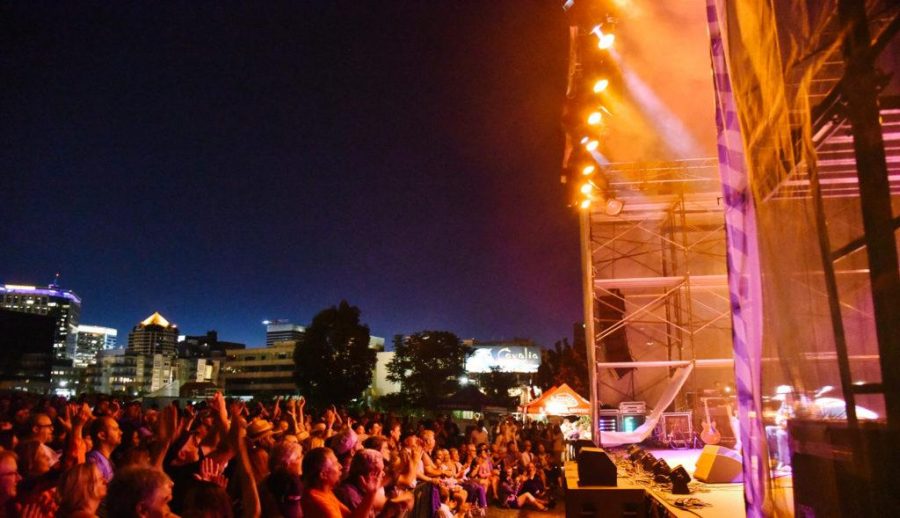The Efficacy of Digital Performances
October 9, 2020
It’s clear that our so-called normal programming won’t be returning anytime soon in the wake of the coronavirus pandemic. However, many artists who aren’t able to perform under the usual circumstances are experimenting with digital ways to engage with their audience and bring them the excitement of a live performance. But, as anyone who has sat through countless hours of deafening silence and technical issues on a Zoom call knows, it’s not always the best platform for these events. Though, there are many ways I’ve seen that artists and organizations are bringing their shows to audiences in ways that are still impactful, even through screens.
Virtual Events
In previous years, the Austin City Limits Music Festival has drawn 450,000 people to their eight stages featuring some of the biggest names in music across all genres. Now, the festival is making up for their canceled event by presenting archival footage from Friday, Oct. 9 through Sunday, Oct. 11. Having filmed previous performances from Billie Eilish, Paul McCartney, Willie Nelson and more between 2003 and 2018, audiences can now view music icons on one of the biggest stages for free on YouTube. While this isn’t one of the more immersive or pointed events recently, it feels like a nostalgic gift, like flipping through a star-studded scrapbook featuring a decade’s worth of shows at one of the largest music festivals in the United States.
Recently, the Red Rocks Amphitheatre in Colorado hosted an audience-less interactive concert featuring major musicians, including Phoebe Bridgers and Megan Thee Stallion called “Red Rocks Unpaused.” The interactive portion engaged audience members by offering a “Cheer-o-meter” that would transmit to microphone audio to applause and polling the at-home audience to choose the pyrotechnics and the animations. Reviews of the concert series called it “the future of concerts.” The recordings are available to watch on YouTube, and they are still epic.
But for artists who don’t have the same resources, an intimate Zoom call does well. I had the opportunity to watch poet Andrea Gibson read some of their treasured pieces and new writings to their audience as they prepare to write another book. The call was respectful and near-sacred; the chat was used as a place of celebration of individuality and inclusion of all people in attendance. It was a show that made me reflect on our world in a way that didn’t leave me torn apart. It was so visceral, I felt the electricity in the air as though I was in the room, not tucked in my bed as most Zoom calls find me these days.
Returning to the Stage
However, we still don’t know how temporary these performances are. Maybe, as the world returns to a stasis, performances will happen in the ways they did before the pandemic. Lately, smaller venues have been hosting in-person events to stay afloat. Now, Saturday Night Live has made its return, kicking off Season 46 with host Chris Rock and musical guest Megan Thee Stallion this past weekend. The premiere was its second-largest, featuring pandemic related content, live sketches and pre-recorded music videos. The show felt like it always has, taking a weight off my shoulders that I didn’t know was there.
While big-name artists and household names may not benefit much from a virtual event, they are a great outlet for lesser-known up-and-comers who can use the draw of a virtual performance to introduce more people to their work. It’s clear that the availability of streaming options — from incredible filming at Red Rocks or Zoom performances to events on Facebook TV, Instagram Live and YouTube Premieres — is changing the landscape of the arts industry.
Dates for upcoming virtual events are available on Billboard or LiveNation.








